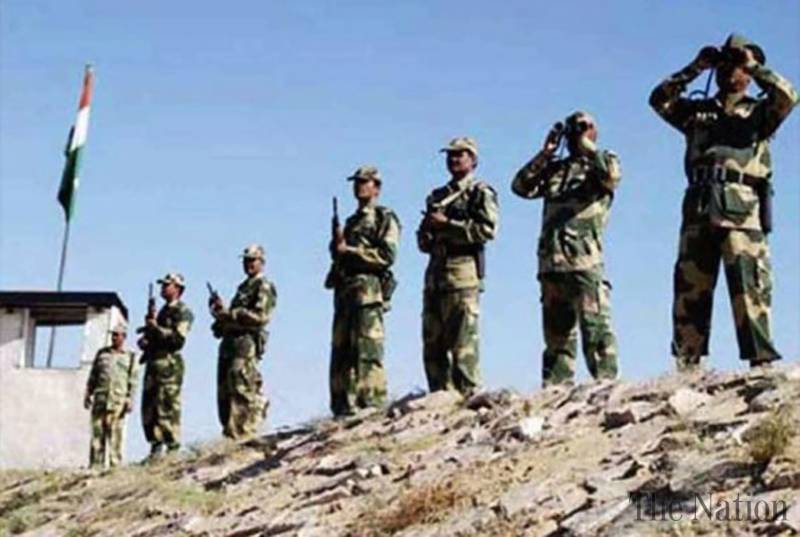Chinese and Indian Military border tension worsens further with Indian Army facing humiliation at Laddakh
Shares

ISLAMABAD - The standoff between the Indian and Chinese armies along the Line of Actual Control (LAC) in Eastern Ladakh appears to be worsening, Indian Media said on Tuesday as the troops of the two countries reported to be in an eyeball-to-eyeball situation at several locations along the de-facto border.
Top Indian military sources told TimesNowNews that the “present situation may evolve to become the biggest standoff” between the two countries since the 73-day-long Doklam dispute of 2017. After China is believed to have moved in some 5,000 troops at several locations along the LAC in Eastern Ladakh, India too has increased its strength, especially in Pangong Tso and Galwan Valley - the two areas from where standoff has been reported over the past few weeks.
At both Pangong Tso lake and Galwan valley, the People’s Liberation Army (PLA) of China has moved in troops and built temporary structures, including erecting tents and building bunkers, besides also deploying heavy equipment.
‘Not a routine standoff’
In conversation with the news agency, former Northern Army Commander Lt Gen (retired) DS Hooda described the situation as a serious one and “not a normal kind of transgression”.
Army sources said China had deployed troops around several key locations including Indian Post KM120 along the Darbuk-Shayok-Daulat Beg Oldie road in Galwan Valley. This is a matter of particular concern as in the past there was no dispute between the two countries as far as territorial jurisdiction of Galwan Valley was concerned.
Strategic Affairs expert Ambassador Ashok K Kantha also described the present situation as disturbing, saying it was not a routine standoff. Why experts may be saying this is because the armies of India and China, at present, are in eyeball-to-eyeball- serious confrontation in several areas including Pangong Tso, Demchok and Daulat Beg Oldie.
According to Indian media, in order to keep the Chinese aggression under check, Indian troops are undertaking “aggressive patrolling” at sensitive points, including Demchok and Daulat Beg Oldie.
According to sources, the situation has escalated this time and diplomatic efforts at the top level may be required to defuse the tensions along the LAC.
The confrontation had started on the evening of May 5 when around 250 soldiers from India and China engaged in a violent face-off in Eastern Ladakh. The situation de-escalated the next day only after local commanders of the two armies spoke. Around 100 soldiers from both sides were injured in the clash during which the two sides exchanged blows and indulged in stone-pelting.
Four days later, a similar confrontation took place near Naku La Pass in North Sikkim. At least 10 soldiers from both sides were injured in the clash. Last week, India had accused China of creating hindrance in normal patrolling by its Army. The
Ministry of External Affairs also rejected China’s claim that Indian forces had trespassed onto the Chinese side.
On the other hand, some India media reports said the direct top-level politico-diplomatic intervention was “now likely for de-escalation” of the almost month-long military confrontation between Indian and Chinese soldiers in soldiers in eastern Ladakh.
There are an estimated 1,200-1,500 People’s Liberation Army (PLA) soldiers now directly engaged in the almost eyeball-to face offs at four to five locations on the northern bank of Pangong Tso (Tso means lake), Demchok and the Galwan Valley region.
“The PLA has also moved some of its border defence regiments closer to the LAC, with at least 5,000 soldiers being diverted towards the border from an exercise being held in the region,” media reports quoting Indian government said sources on Monday.
“China is committed to safeguarding the security of its national territorial sovereignty, as well as safeguarding peace and stability in the China-India border areas,” the Chinese Foreign Ministry spokesperson’s office said in a statement.
